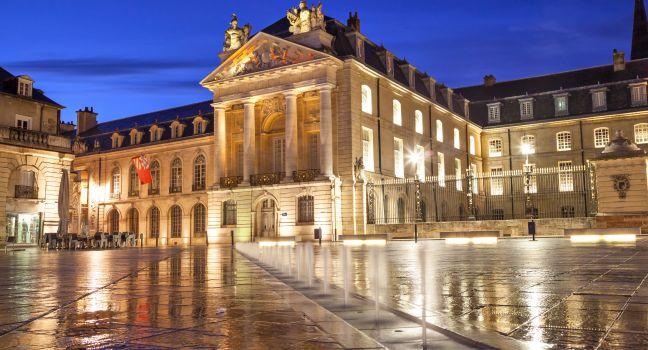Dijon

You may never have been to Dijon but you've certainly tasted it. Many of the gastronomic specialties that originated here are known worldwide. They include snails (many now imported from the Czech Republic), mustard (although the handmade variety is becoming a lost art), and cassis (a black-currant liqueur often mixed with white wine—preferably Burgundy Aligoté—to make Kir, the popular aperitif). The city itself is also a feast for the eyes, with charming streets, chic shops, and an impressive array of medieval art. It has magnificent half-timber houses and hôtels particuliers, some rivaling those in Paris. There's also a striking trio of central churches, built one following the other for three distinct parishes—St-Bénigne, its facade distinguished by Gothic galleries; St-Philibert, Dijon's only Romanesque church (with Merovingian vestiges); and St-Jean, an asymmetrical building now used as a theater. On top of that, it has a tourist-friendly vibe; many travelers feel it is the perfect French community, possessing the charm of a village as well as the sophistication and liveliness you’d expect of a capital.
Dijon was a major player in the history of the region. Throughout the Middle Ages, Burgundy was a duchy that led a separate existence from the rest of France, culminating in the rule of the four "Grand Dukes of the West" between 1364 and 1477—Philippe le Hardi (the Bold), Jean sans Peur (the Fearless), Philippe le Bon (the Good), and the unfortunate Charles le Téméraire (the Foolhardy, whose defeat by French king Louis XI at Nancy spelled the end of Burgundian independence). A number of monuments date to this period, including the Palais des Ducs (Ducal Palace), now largely converted into an art museum. Luckily, Dijon's fame and fortune outlasted the dukes, and it flourished under French rule from the 17th century on. It has remained the largest city in Burgundy—and the only one with more than 150,000 inhabitants; moreover, its location, on the major European north–south trade route and within striking distance of the Swiss and German borders, has helped maintain its economic importance. Dijon continues to be a thriving cultural center as well.
Recommended Fodor's Video
Elsewhere in Dijon
Autun >
Restaurants (2), Things to do (3), Hotels (2)
Auxerre >
Restaurants (1), Things to do (2), Hotels (2)
Ancy-le-Franc >
Restaurants (0), Things to do (1), Hotels (0)
Abbaye de Fontenay >
Restaurants (0), Things to do (0), Hotels (0)




